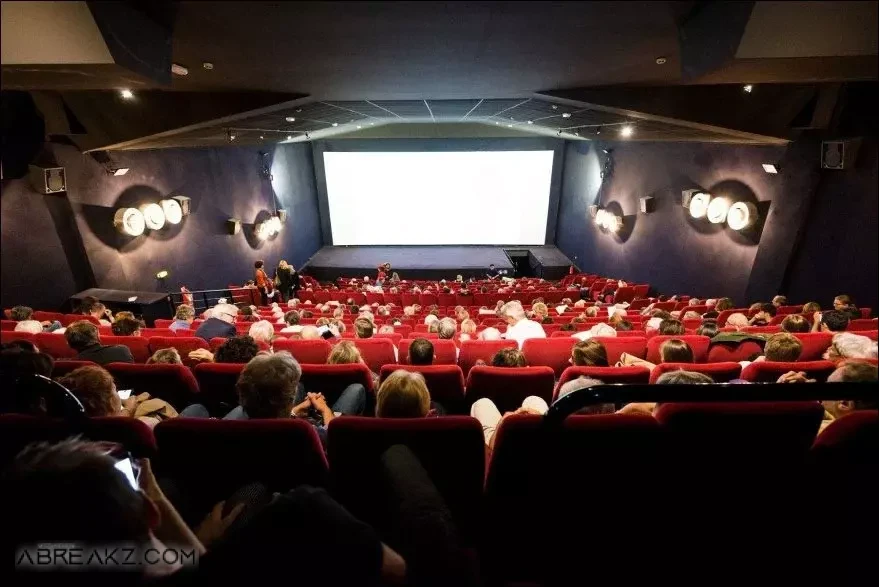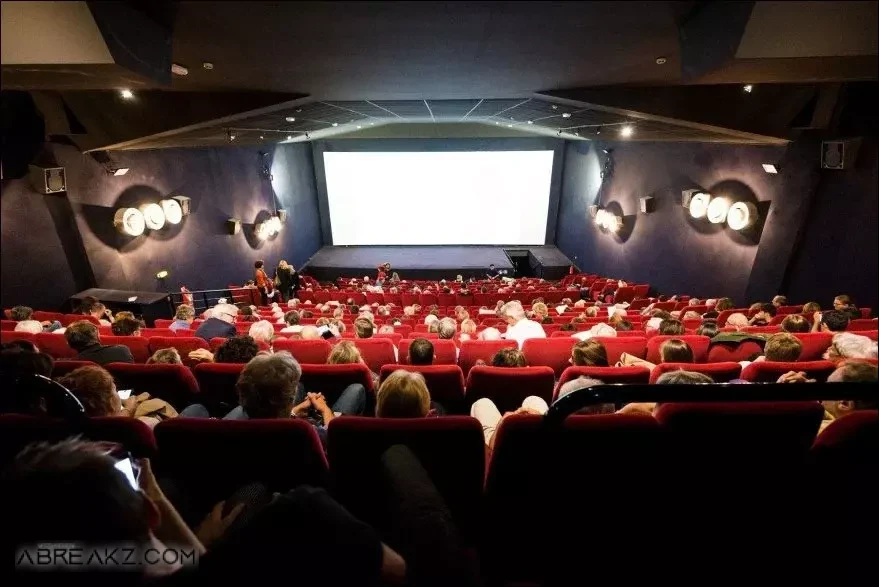In fact, a long time ago the difference was made in formulating a comprehensive, complete and integrated definition that sums up cinema and gives it its right in a manner that befits it, preserves its dignity, and restores to it its splendor, flavor and color that has been rusted over the years.
What about functions of cinema?
1. Recreational function:
Cinema gives the viewer, spectator, or follower the enjoyment of his free time and spends a beautiful, interesting and interesting time accompanied by cinema films such as Hollywood films. In this case, cinema is considered an entertainment material, as well as a rich, creamy material that the viewer enjoys after resting from the hardships, hardships, and pressures of work.
2. Advertising function:
We cannot ignore this function. In the world of cinema, we have important concepts related to cinema advertisements, such as cutting and selling tickets in cinema, the box office star, and the most important thing is advertising promotions and the role of the media in promoting cinema products, makers, films, and the like.
3. Aesthetic function:
Cinema is another type of arts and culture that simulates man and conveys his concerns and tragedies, and sheds light on problems and issues that concern the poor, destitute, persecuted, oppressed, sad, weak and homeless person, just as it concerns all of humanity. Cinema also performs a cosmetic or aesthetic function, so to speak; She is keen to convey reality truthfully, and then add an aesthetic touch to it to present it as an artistic painting of sumptuous beauty in which whiteness unites with blackness.
In order not to forget, cinema enriches other cultures and arts because it is the language of beauty and the source and birth of it in terms of image engineering, the magic of lighting, the beauty of colors, the splendor of the performance of actors, the professionalism of editing and photography, and other elements necessary to give an aesthetic touch to the cinematic scene and make the film successful and distinguished.
4. The educational function:
You must realize a very important point; Which is that cinema is not limited to its functions only in issues of entertainment, advertising and the formulation of beauty only; Rather, it has a very sacred function, which is education. Cinema can often contribute to human education through real stories and anecdotes and realistic suffering that it presents through targeted films with a noble and timeless message. Cinema can often play the role of a teacher by presenting Stories of people who were ordinary and whose star shined bright after a difficult, long and arduous journey of suffering. Cinema is entertainment, beauty, education, inspiration, boundless culture and thought that rises to the highest levels.

What is the importance of cinema in our lives?
1. The great importance of cinema is evident as an effective and successful tool, and a necessary media tool for shedding light on society's issues and concerns, and talking about people and their lost dreams, successes, and stories of love and separation.
2. Cinema makes the viewers' minds and minds more open, innovative, and capable of giving and creativity in the various fields and fields of life.
3. Cinema can, in any case, inspire creative, innovative and unique ideas, distinguished people, geniuses, and different people who lived through difficult, painful, and painful circumstances that sculpted other, more solid and powerful people out of them, and turned their personalities into success stories and honorable human biographies that are narrated in films and series that are captured by cinema. It conveys it to the viewer through the eyes of the observer, the photographer and the critic at the same time.
What are the stages of the cinema and film industry?
In order for a cinematic film to reach the finals and the final product stage, it must go through several stages and steps, including:
1. Screenplay:
The text is the backbone of the film and its main structure that we cannot dispense with or replace with any other element. The film can only be built through a coherent text, and the cinematic text constitutes a major criterion in determining the possibility of success or failure of the film. It is based on the material of a strong, coherent cinematic text in the form of a narrated novel or a narrated story that includes events, characters, conflicts, and a nice, strong, coherent scenario.
One of the factors for the success of the film script is the escalation of the course of events in conjunction with the development of the characters, and the increase in the element of fantasy, suspense and amazement from the beginning of the text to its end. Depending on the type of text or cinematic material written on paper by the writer or author, films are divided into many types and classifications. Such as romantic films, comedy films, anime films, animated films, animation films, action films, horror films, and other films.
2. Determine the film's budget:
For the success of the cinematic film, an important point must be taken into account, which is limiting the budget of the film, in addition to preparing the necessary equipment in order to provide a higher quality and an appropriate atmosphere for cinematographic techniques, and making and preparing decorations that suit the work atmosphere, the nature of the text, places and locations for filming, in addition to preparing The cadre and crew of the artwork and cast, including actors, photographers, lighting managers, etc., in order to obtain a high standard for the artwork. These aforementioned factors are among the most important factors that affect the production budget and the artwork budget as a whole.
3. The director performs all the tasks required of him:
The responsibilities that fall on his shoulders as the captain of the ship and the employer in terms of preparing, preparing, supervising and managing the cast and artwork, making adjustments to the text, and choosing the best crew of actors and big stars so that the right person is in the right place.
In fact, the director is responsible for every big and small thing in the work, and there is no blemish that passes in the film without being aware of it, and he is more knowledgeable than the actors themselves in directing the artistic vision, and adding some technical and dramatic changes and modifications to the text, including dialogue and scenario.
The director also has an important and major role in controlling image quality and visual effects, controlling lighting and colors, defining the artistic vision of the cinematic text using the vision of the writer, author, screenwriter, dialogue with actors, and researching the character’s details, rituals, psychological states, and fluctuations.
What is importance of film and cinema industry?
The importance of the film and cinema industry lies in several factors, as follows:
1. The strength of the film in terms of providing all the elements of its success, such as the coherence of the text, the strength of the dialogue, the robustness of the script, and the cinematic plot.
2. The role played by the film in terms of economic and social impact on a certain group of people, which it attracts and targets, and directs its words and messages to them.
How did international film production begin as an independent film industry?
Cinema has increased its importance and has met with widespread, popular, flourishing and great recovery since the invention of a very sacred idea called the great cinematic term, the idea of making films, began historically, and this happened in the year 1839 AD from the modern and contemporary history of cinema, and in the same year, cinema witnessed a new and innovative development represented in the invention Special type printing plates whose mission is to display images in another, more innovative and modern way.
In the year 1889 A.D. of our modern and contemporary history, a so-called "Atel Jean-Marie" and based on a theory called the sixth theory used a very special plate called a photographic plate instead of using lead in order to record images in a more innovative and modern way, in addition to saving time and effort. This great invented something called the photographic engine, and fortunately all of this was done with the push of one small button.
These machines were all combined in the year 1894 AD; As the so-called "Lambert Brother" was able to use long and wide rectangular screens to make a special camera for a movie to present and display static images in a fast and mysterious way that makes the viewer's mind, view and comprehension as if he had entered a large maze that he does not know anything about, and this is called in the world and language of cinema a cinematic trick.
It is worth noting that the first film was shown in the year 1895 AD, and it was fifteen meters long. Later, more than ten films were filmed. Continuous and sequential, and the first film taken from a long novel was shown, its duration lasted about twelve minutes, and the method of sequential images took the form of clear stories; Which, in turn, contributed clearly and significantly to establishing the standards of quality and level of prestigious and respected international cinematic production.
Despite the existence of academies, universities, institutes, schools, institutions and systems that study cinema as a science in itself, this subject is still vague and subject to doubt and contradiction to a large extent. Speech is unjust and offensive to the value and status of cinema, its greatness and sanctity.
in conclusion:
The quotation that takes place in cinema and its borrowing of movements from other arts such as dance, architecture, theater and poetry does not diminish the value of cinema and does not affect its sanctity. On the contrary, it gives it another formula and another artistic dimension, and makes it sit on the throne of other arts. This makes us believe and believe in the validity of the saying, “Cinema is the mother of the arts.”







































